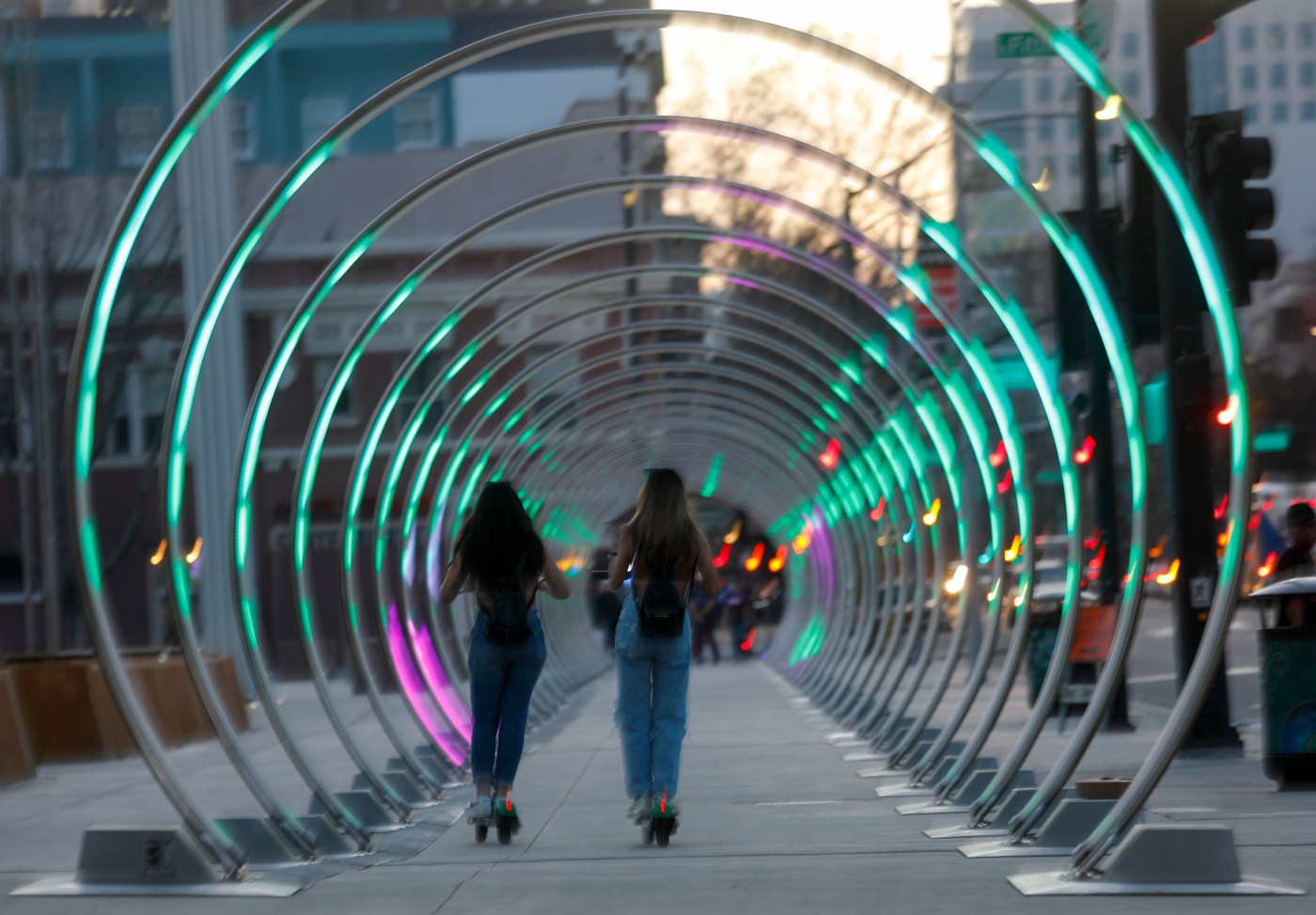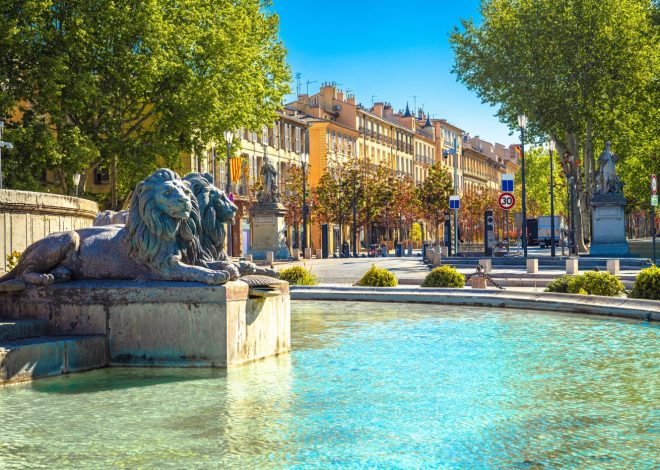
Burning Man light sculpture dazzles downtown San Jose
The huge metal rings vertically embedded in the sidewalk just outside San Jose’s City Hall go almost unnoticed in daylight, blending into the building’s sleek architecture. But when the sun sets, the concentric arches come to vivid, pulsing life.
Waves of colorful lights race down the runway’s curves to the beat of ambient electronic music, an immersive spectacle that evokes the installation’s birthplace — far from the downtown buzz at Burning Man, the annual weeklong, counterculture spectacle in Nevada’s Black Rock Desert.
Designed by a pair of former Pixar colleagues, Rob Jensen and Warren Trezevant, Sonic Runway made its festival debut in 2016 — where first-time attendee Kerry Adams Hapner, San Jose’s director of cultural affairs, was “blown away” by the sculpture.
What if, she wondered, all of San Jose could experience the piece, too?
The answer was the Playa to Paseo project, which eventually brought seven Burning Man artworks from the desert to downtown. In 2017, Sonic Runway became the first installation to take up residency in San Jose, spanning more than 400 feet of sidewalk between Third and Fourth Streets and lighting up from sunset to midnight. A playlist of mellow instrumental tracks plays from one end of the tunnel, with each ring lighting up as the beat of the music reaches it.
The light art installation quickly charmed the city and became a go-to downtown photo spot, with more than 4,000 Instagram posts tagged at the site. Families, cosplayers, bikers and dancers have all shared their love for the colorful LED experience online.
“Sonic Runway has been so wildly popular,” Adams Hapner said. “It’s what you hope. You hope that the community loves it and has that sense of joy that you experience when you walk down the runway.”
The runway is audio reactive, with LEDs synced to its electronic music, but for special events, live music can provide sonic inspiration instead. A cellist, a youth choir and an opera singer have all plugged in.
A participant rides through the Sonic Runway during dusk at Burning Man in Black Rock City near Gerlach, Nev. (Photo by Watchara Phomicinda, The Press-Enterprise/SCNG)
The runway creators first met in the late 1990s while working at Pixar in Emeryville. Jensen had been a Burner for years. In 2002, he convinced Trezevant to come along, and it was there that they dreamed up the first version of the sculpture — made with pyramids, rather than rings.
The first iteration was “basically just a series of strobe lights that was a sort of nerdy scientific visualization of the speed of sound,” Jensen said. “The whole point of that was to be able to see the beat of the music, and in particular, to be able to see it coming at you before it got there.”
They funded the project themselves and built it with a team of friends, aligning with Burning Man’s collaborative spirit. It debuted at the 2003 event.
Related Articles
Sparkle and shine: Light-based art flourishes in the Bay Area
‘Nightmare’ sculpture that won over some New Zealanders moves on to a new home
Trash art: A new show in San Francisco celebrates ordinary detritus
Mary Cassatt’s dazzling defiance on display at SF’s Legion of Honor
Euphrat’s new exhibit aims to capture ‘Glimmers’ of connection
Over the next decade, audio processing and LED technology advanced significantly. Trezevant and Jensen set up a crowdfunding campaign to create an updated version of their installation. The 2016 runway used a sequence of steel arches, which allows lights to move in another dimension, around each curve, and creates a “shared space” for viewers, Trezevant said, while still being open to the surrounding world.
“You can easily move in and out of it, and it doesn’t feel claustrophobic,” he said. “I think it has this really elegant feeling to it.”
Built for a short stay at Burning Man, the work wasn’t intended to withstand the wear and tear of urban life. The desert festival is a celebration of the artistic and the ephemeral, after all. So the city of San Jose eventually partnered with Jensen and Trezevant to create a more permanent version designed for downtown. Sonic Runway made its return in 2021 and is set to remain there until at least 2027.
“There’s a certain magic that comes from the temporariness, but it’s fleeting, and very few people actually get to experience it,” Jensen said. “It’s been very rewarding for both of us to know that this piece has had a life beyond that one sort of bizarre environment, and many more people are able to enjoy it on a daily basis.”
Trezevant hopes passersby of all ages will feel a sense of wonder as they interact with the light installation.
“Every time I walk through the runway, and I see other people, they’re always smiling,” Trezevant said. “It just seems like this tunnel of smiles, everyone having a good time.”


